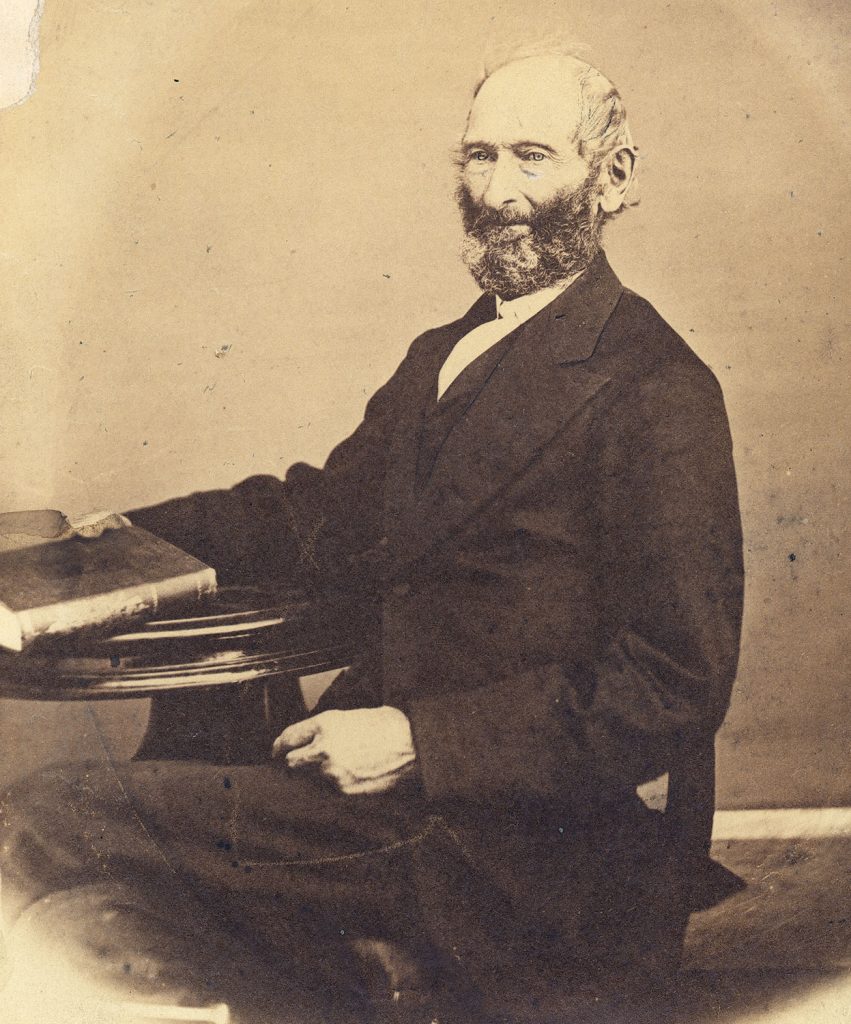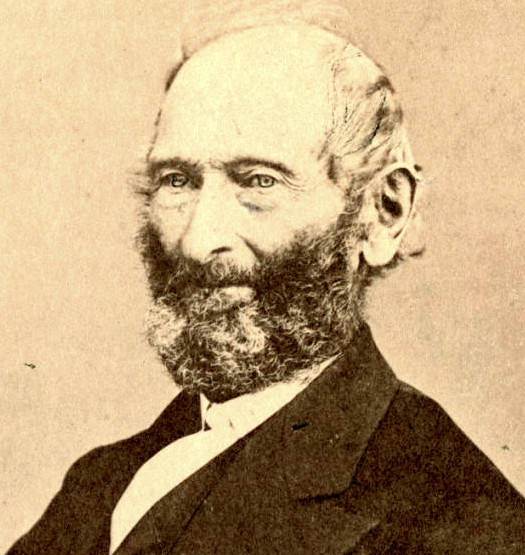John Whitmer
(1802–1878)


By Susan Easton Black
John Whitmer was the son of Peter Whitmer Sr. The foundational meeting of The Church of Jesus Christ of Latter-day Saints was held in his home in Fayette, New York.
John’s feelings about religion changed in 1829 when Joseph Smith and Oliver Cowdery accepted the hospitality of his parents. With Joseph translating the final pages of the Book of Mormon in the second story of his home, John was no longer interested in attending the German Reformed Church in town. He embraced the teachings of Joseph Smith and his Restoration message. He even scribed a portion of the Book of Mormon translation.
John was privileged to be one of the Eight Witnesses of the Book of Mormon, being shown the sacred plates by the Prophet Joseph. When Joseph began translating the Old Testament, John served as one of his earliest scribes. With unflinching devotion, John shared news of the Restoration from New York to Ohio before being called to write the history of the Church (see D&C 47:1). He wrote ninety-six pages of historical information.
In 1831 John joined his brother-in-law Oliver Cowdery in hand-carrying scribed revelations from Kirtland, Ohio, to Independence, Missouri. The scribed pages were given to W. W. Phelps to typeset and print. Unfortunately, mobs destroyed Phelps’s printing office. John did not return to Kirtland. He remained in a small Latter-day Saint settlement near the Little Blue River in Jackson County, Missouri. During the harrowing conflict between the Saints and Missourians in Jackson County, John offered himself as a hostage in hopes of quelling mob violence. Finding his offer rejected, he and other Latter-day Saints fled for safety across the Missouri River to Clay County.
John became a prominent Church leader in Clay County. By 1834 some viewed him as second only to his brother David Whitmer in station and talent. On July 3, 1834, John became a counselor to David in the Church presidency in Missouri. As a counselor, he sought legal redress for wrongs suffered by the Saints in Jackson County and for protection against mob violence in Clay County. In 1835 John returned to Kirtland. On May 18, 1835, he penned, “This day held a council and contrary to my feelings or expectations I was appointed to edit the Messenger and Advocate,” a Latter-day Saint newspaper.1 In an editorial written to his readership, John wrote, “I know that the Bible, book of Mormon and book of Doctrine and Covenants of the church of Christ of Latter Day Saints, contain the revealed will of heaven.”2
It was not until John returned to Missouri in 1836 and purchased land tracts with Church funds in Caldwell County that his integrity was questioned. Financial irregularities in the purchase led to allegations of impropriety and his refusal to disclose records of the transactions. On March 10, 1838, John was excommunicated “for persisting in unchristian-like conduct” and for refusing to give to Joseph Smith historical writings of the Church. John later wrote in his journal asking that “I may be forgiven of my faults, and my sins be blotted out, and in the last day be saved in the kingdom of God, notwithstanding my private situation, which I hope will soon be bettered, and I find favor in the eyes of God, all men and his Saints.”3
Although estranged from Church membership, John continued to reside in Far West, a Latter-day Saint community. When the Saints fled from their homes and property in Far West due to atrocities arising from the Extermination Order in 1838, John did not budge. He took advantage of cheap prices for land and purchased much of the abandoned town.
During the next forty years, John expressed brief interest in William E. McLellin’s religious claims and was sympathetic to the teachings of James Strang and the claims to leadership of his brother David Whitmer. Yet for the most part he remained aloof from any religious society.
John Whitmer was the last survivor of the Eight Witnesses of the Book of Mormon. He had many occasions to bear his testimony as to the truth of the ancient text. One man reported, “Old Father John Whitmer told me last winter, with tears in his eyes, that he knew as well as he knew he had an existence that Joseph translated the ancient writing which was upon the plates which he saw and handled.”4 John died in July 1878 in Far West at age 76. He left an estate that included 625 acres of prime farmland near Far West, livestock, farm machinery, and a two-story house.
1. Journal of John Whitmer. Church History Library.
2. John Whitmer, “Address,” Messenger and Advocate 2, no. 6 (March 1836): 287.
3. John Whitmer, An Early Latter Day Saint History: The Book of John Whitmer F. Mark McKiernan and Roger D. Launius, eds. (Independence, MO: Herald Publishing House, 1980), 20.
4. “Myron Bond Letter,” Saints’ Herald, August 15, 1878, 254.

